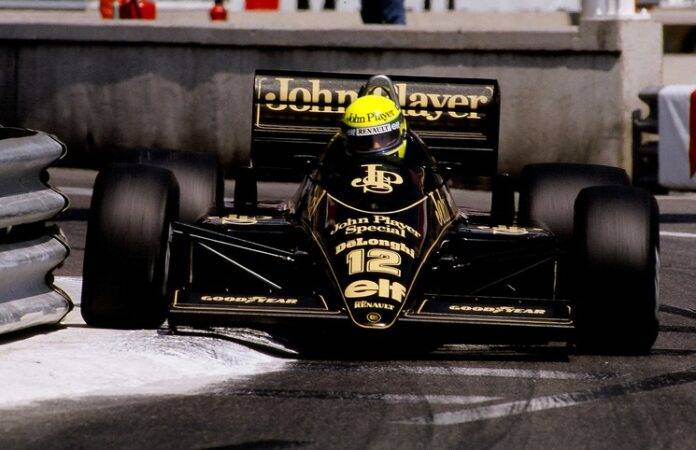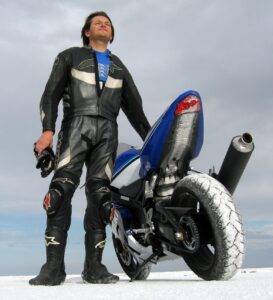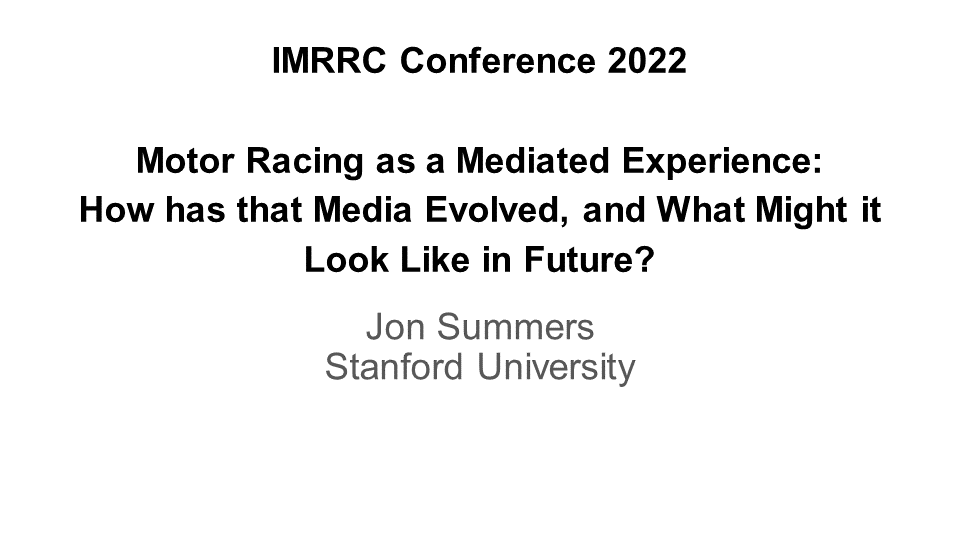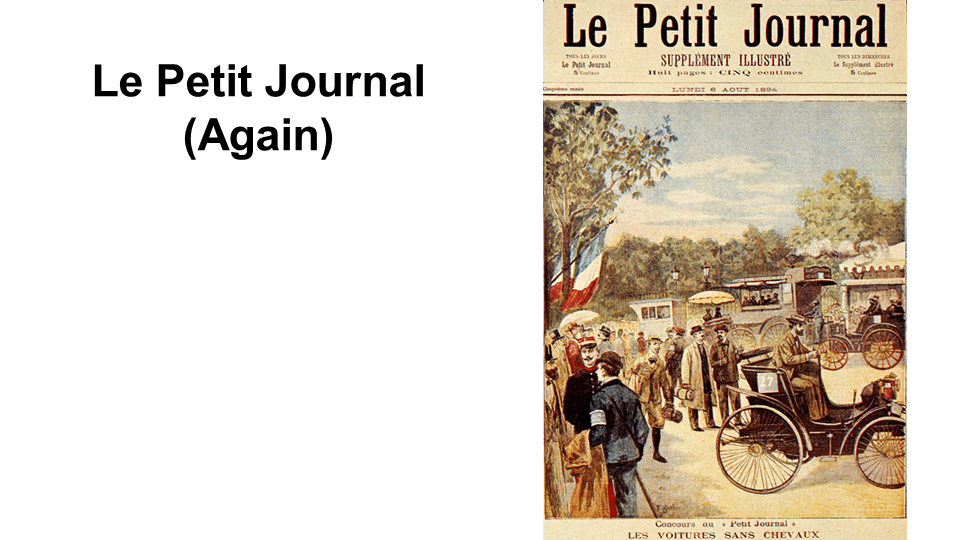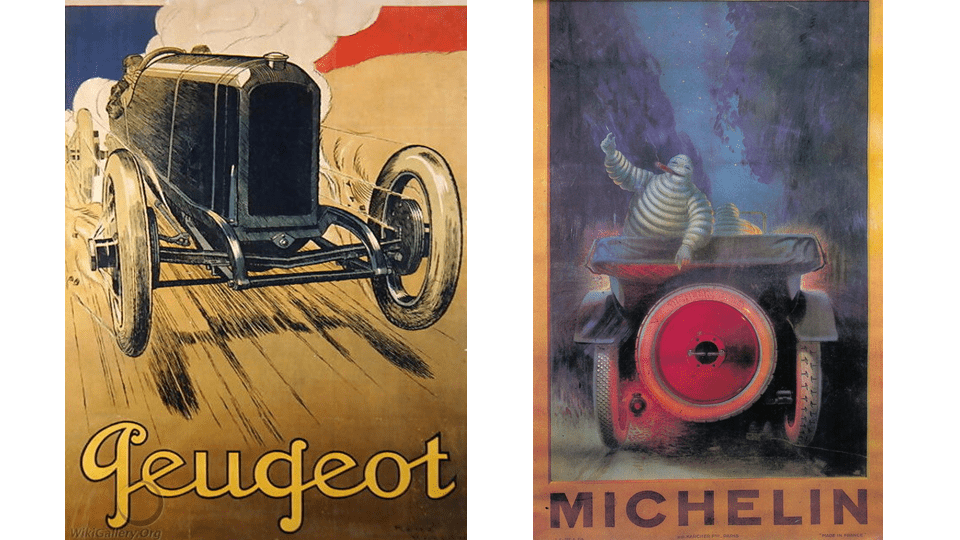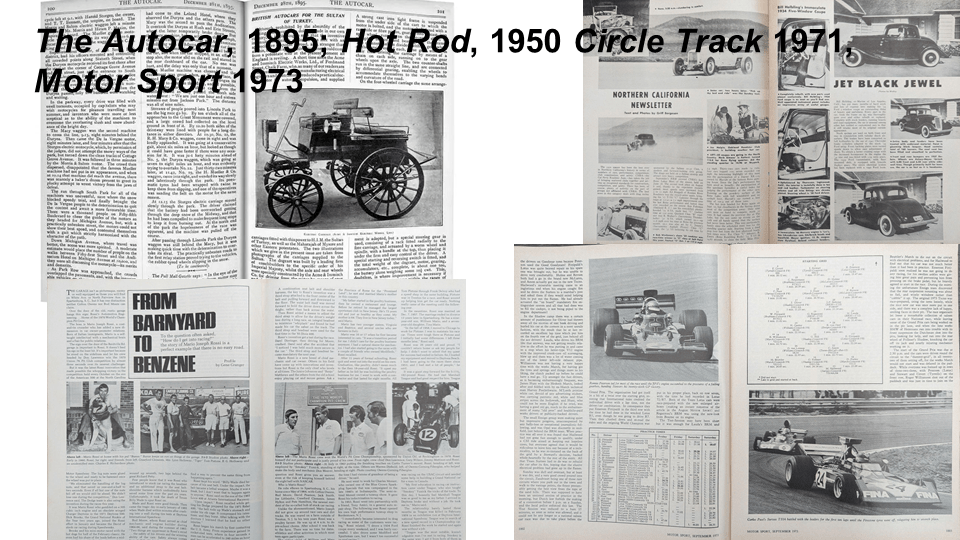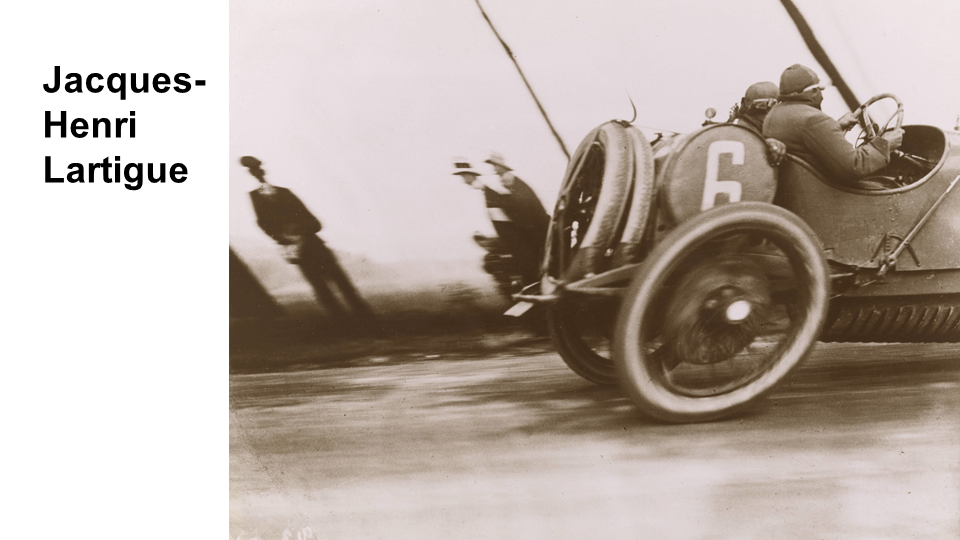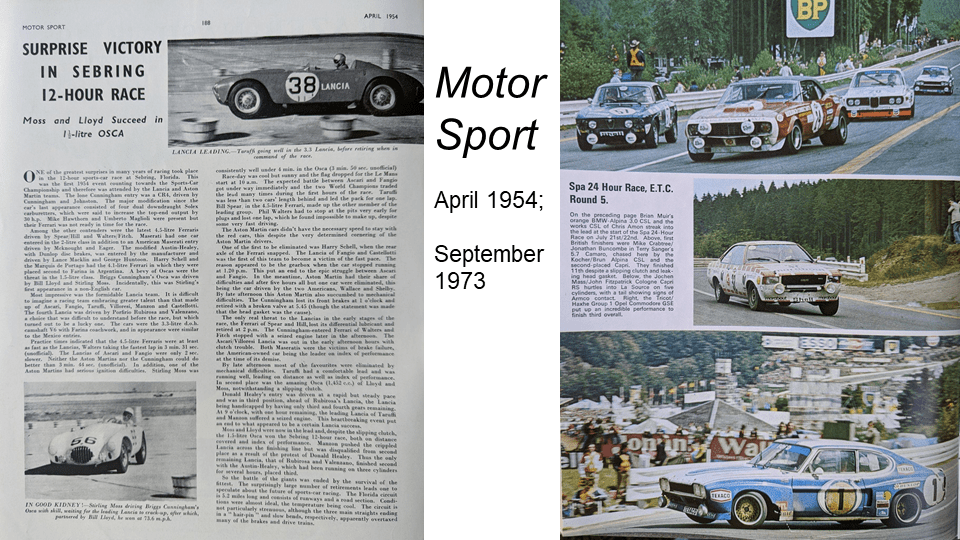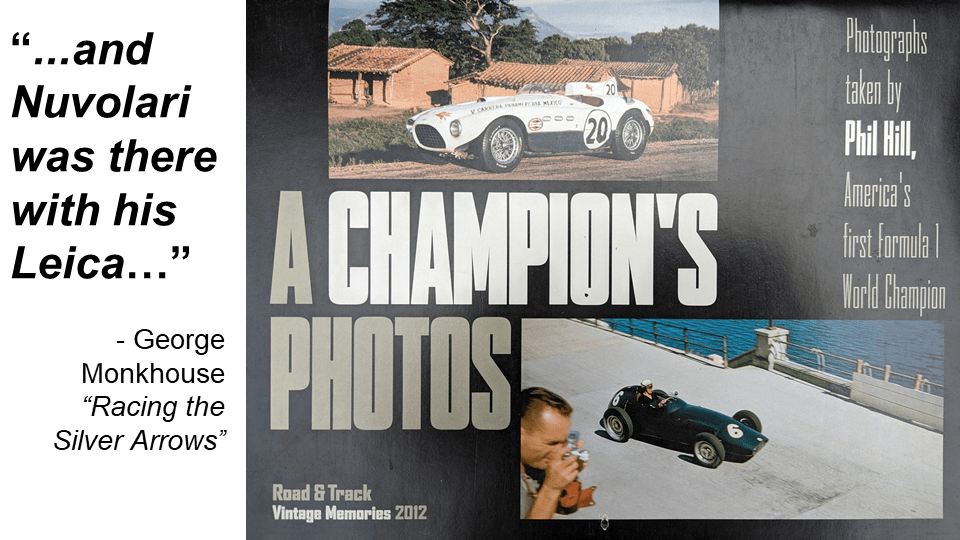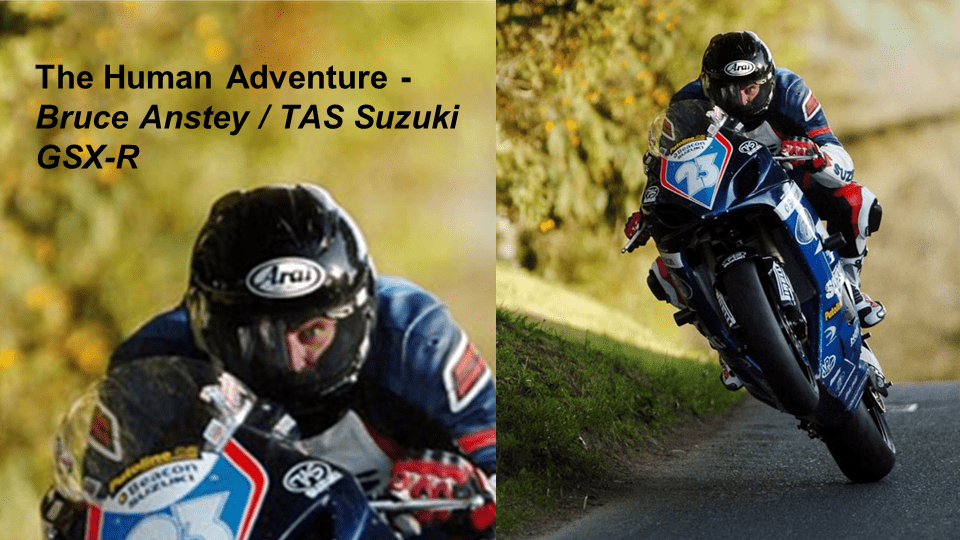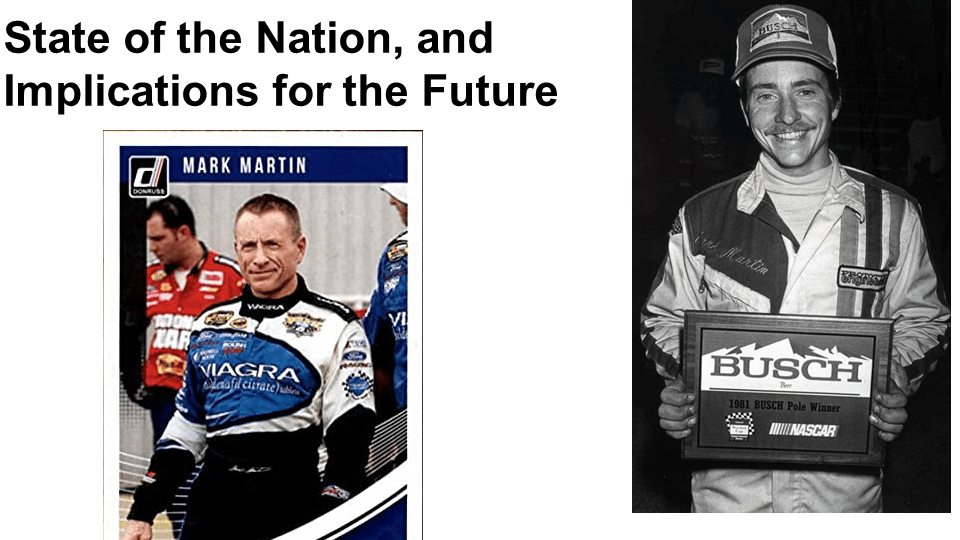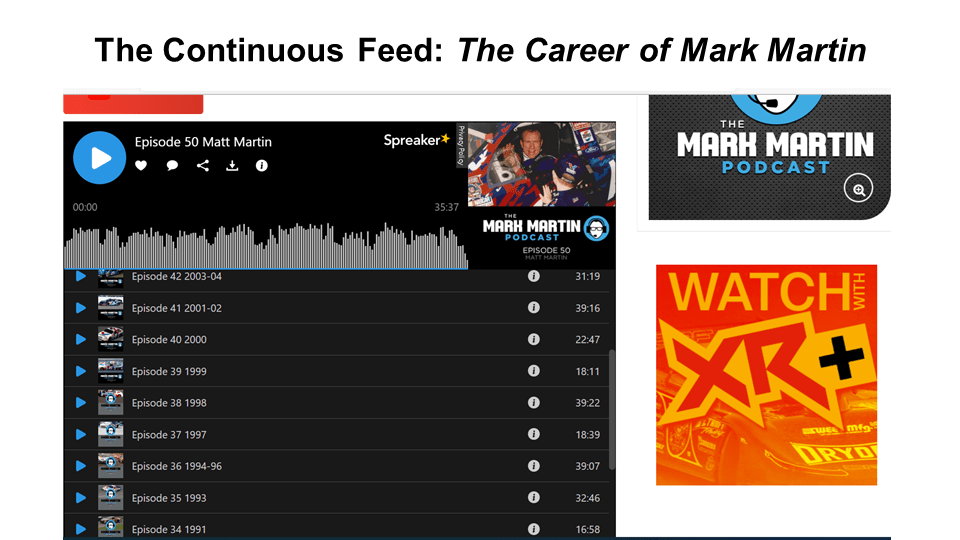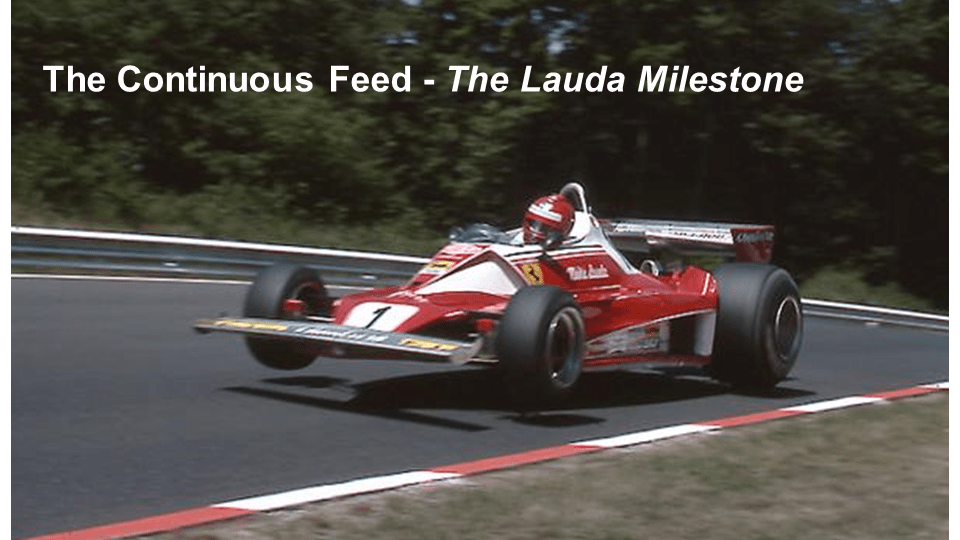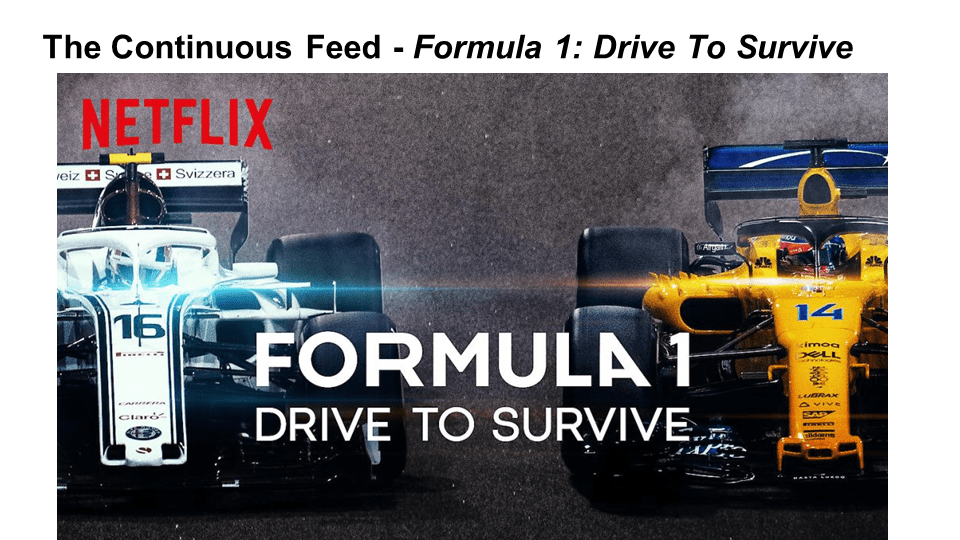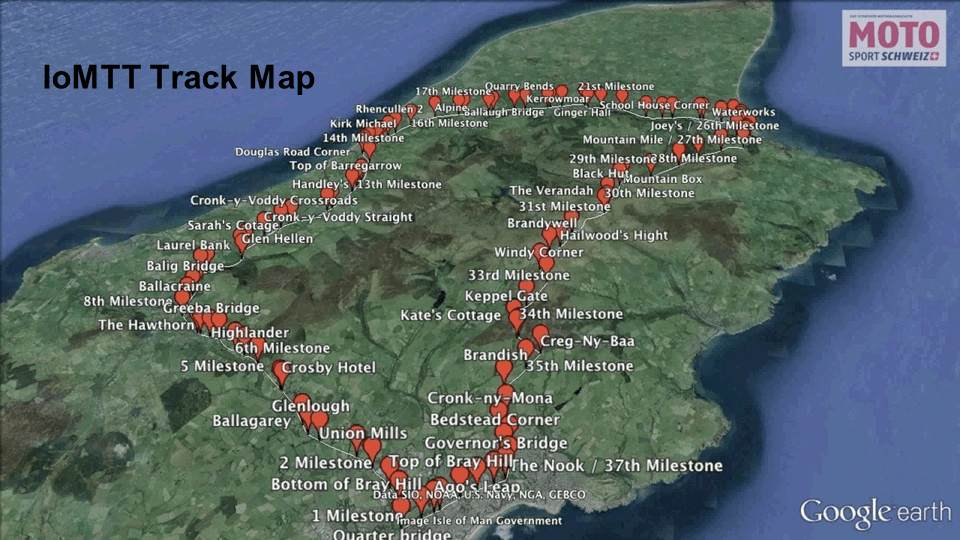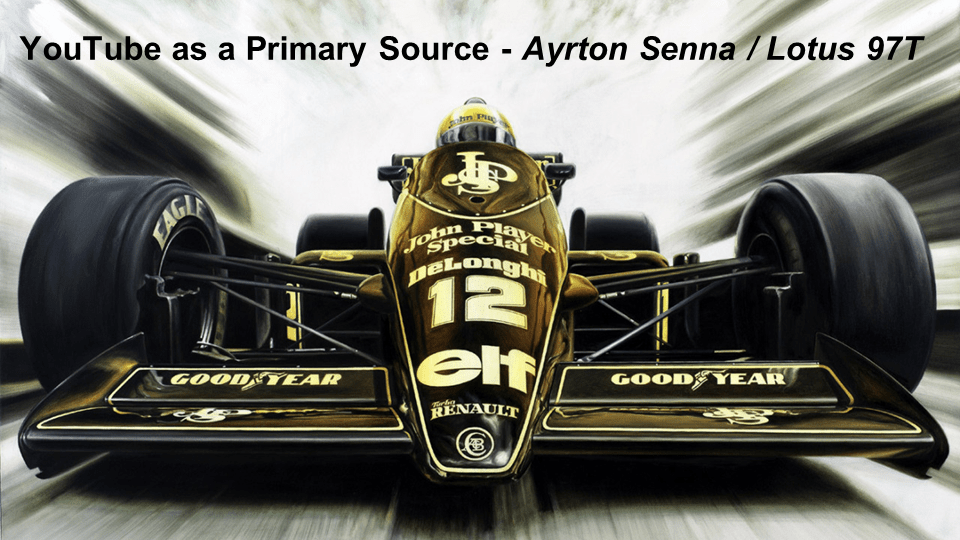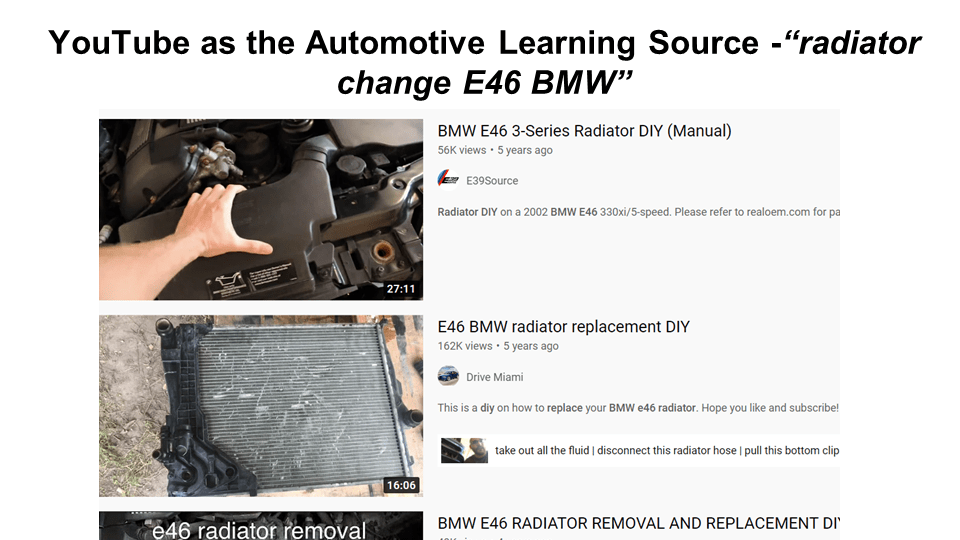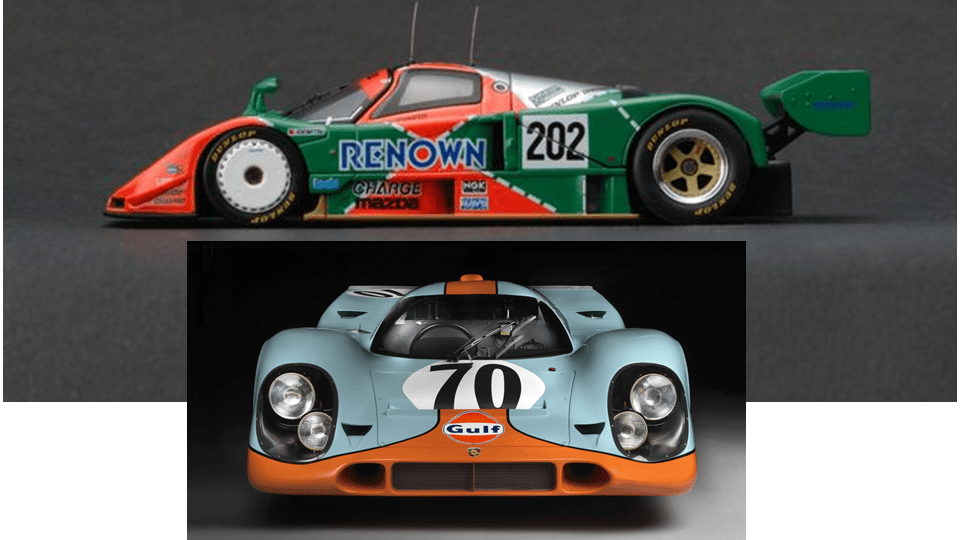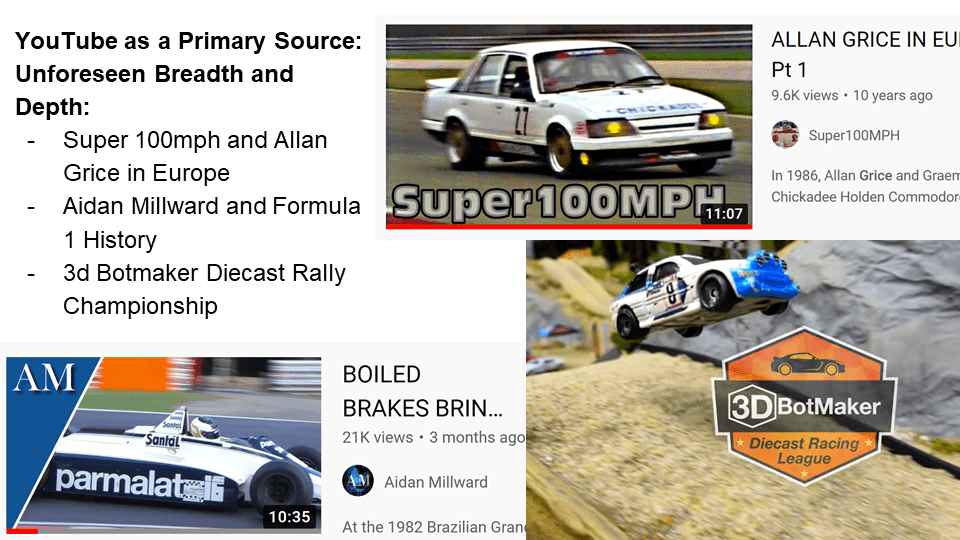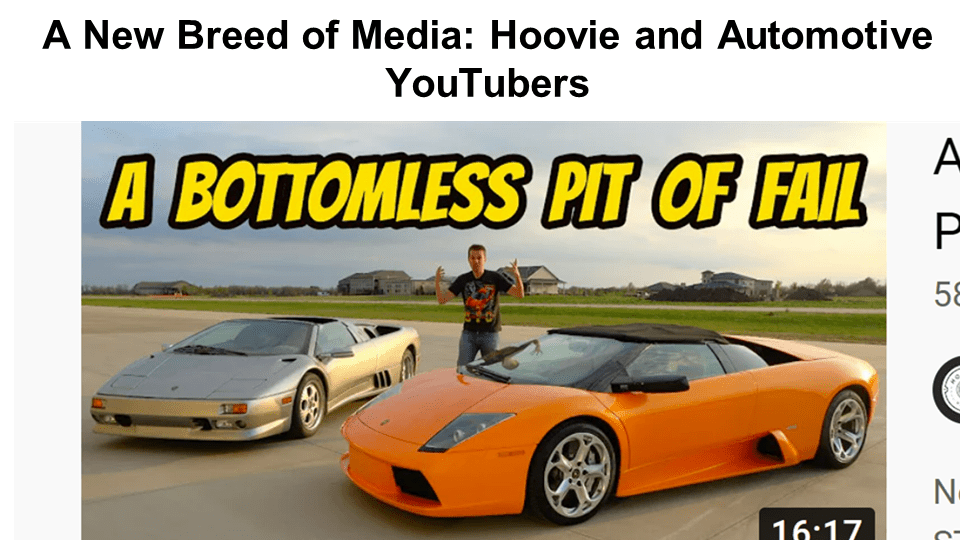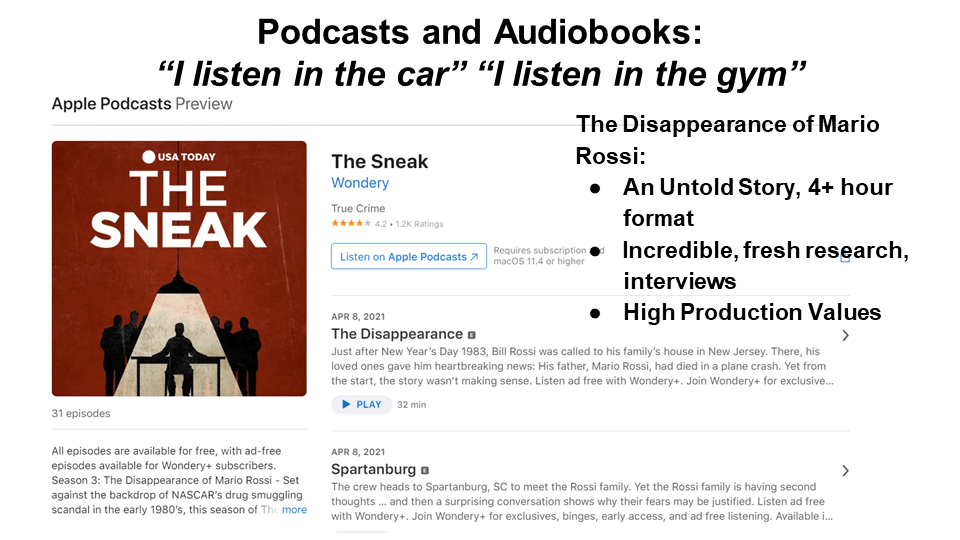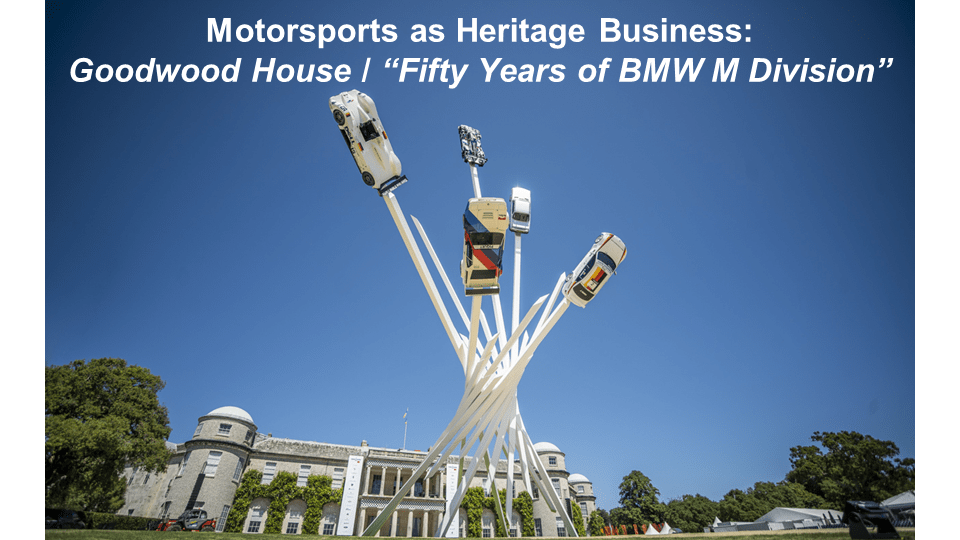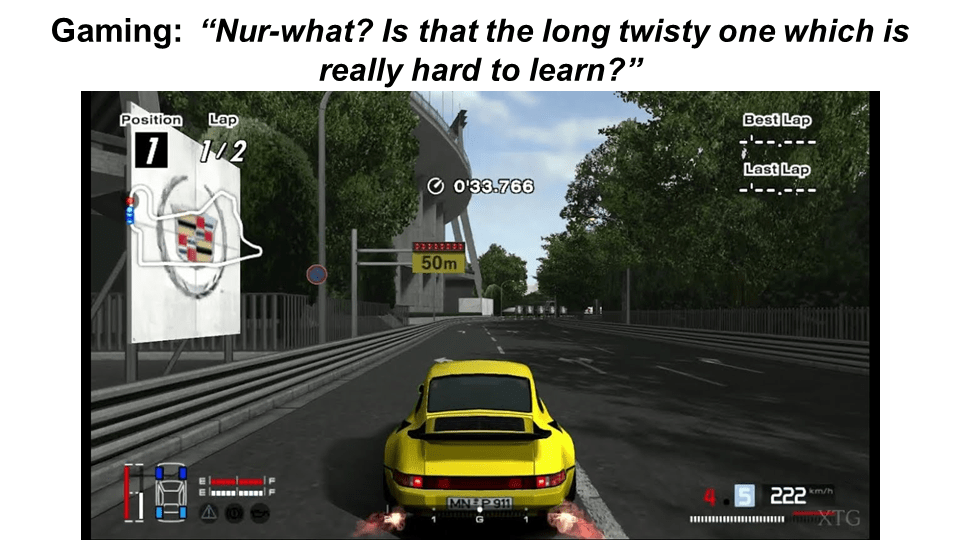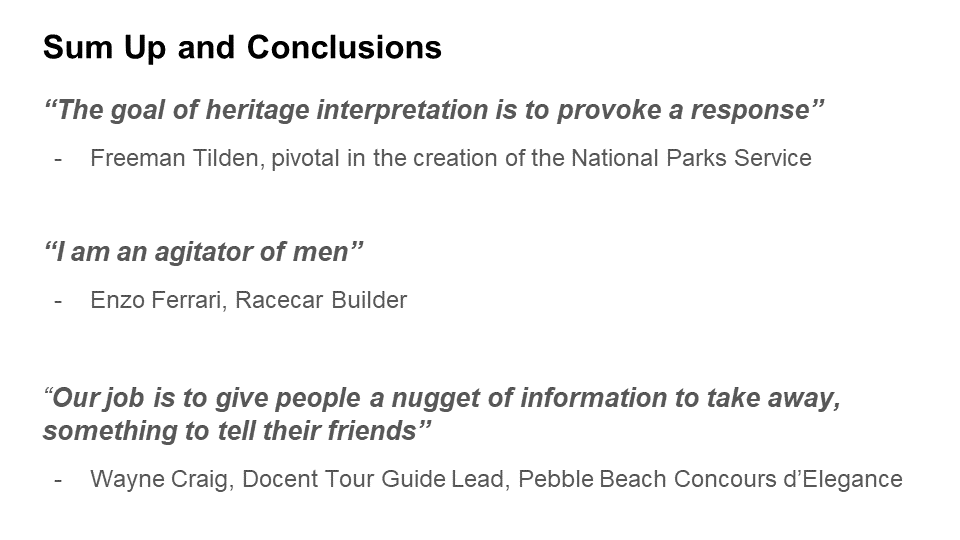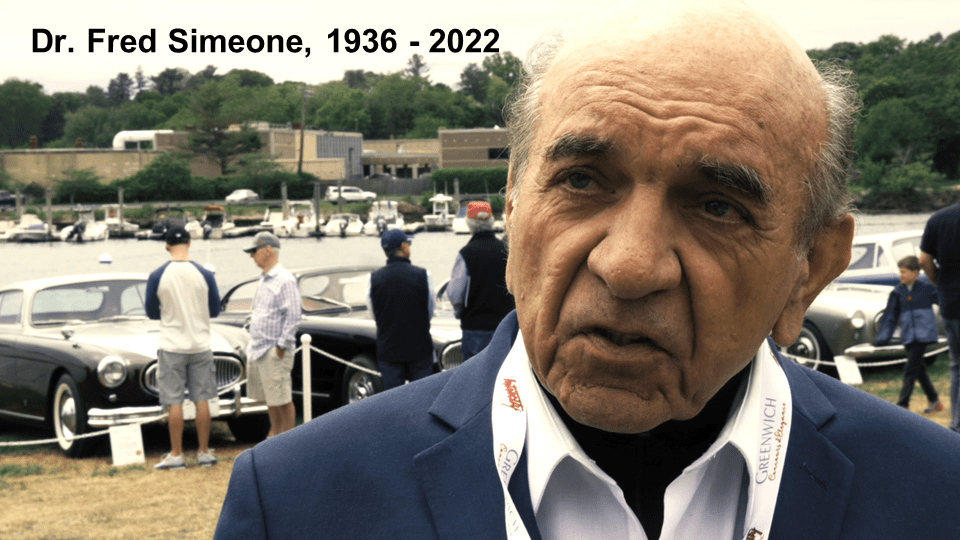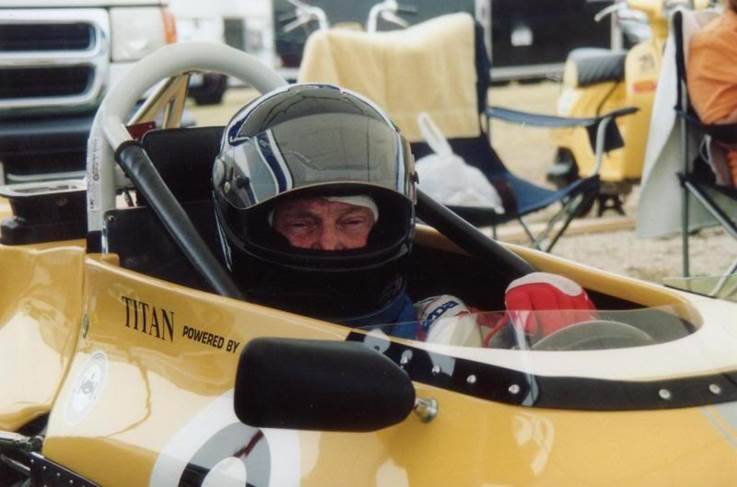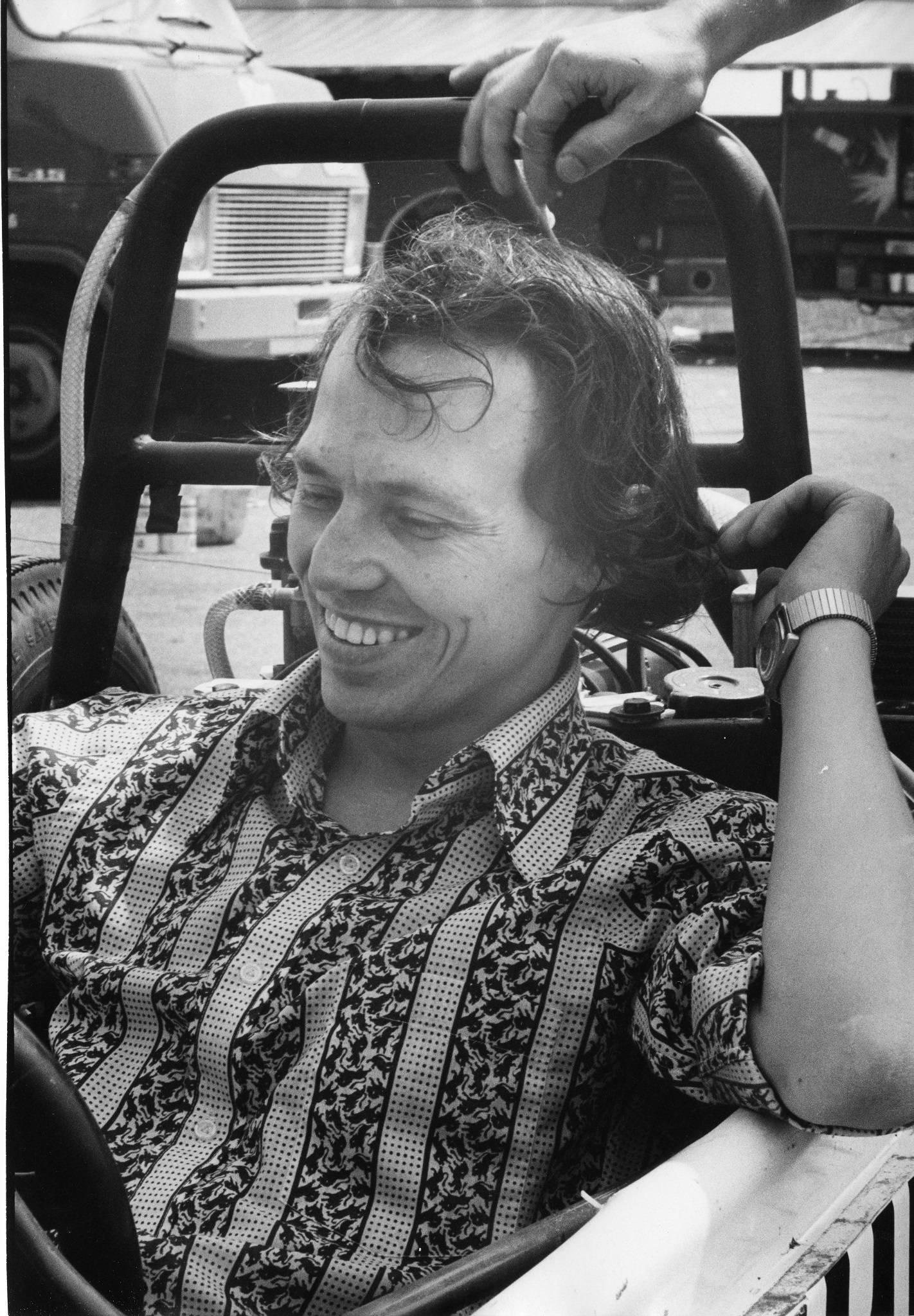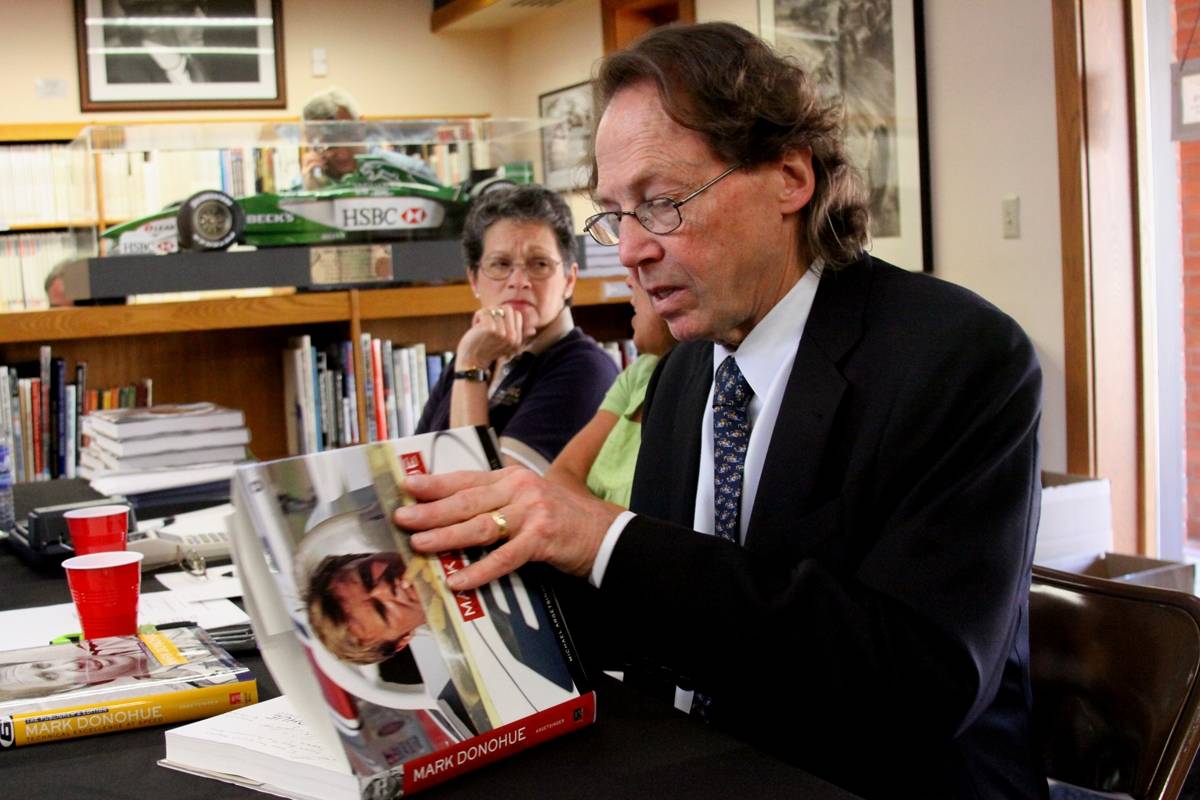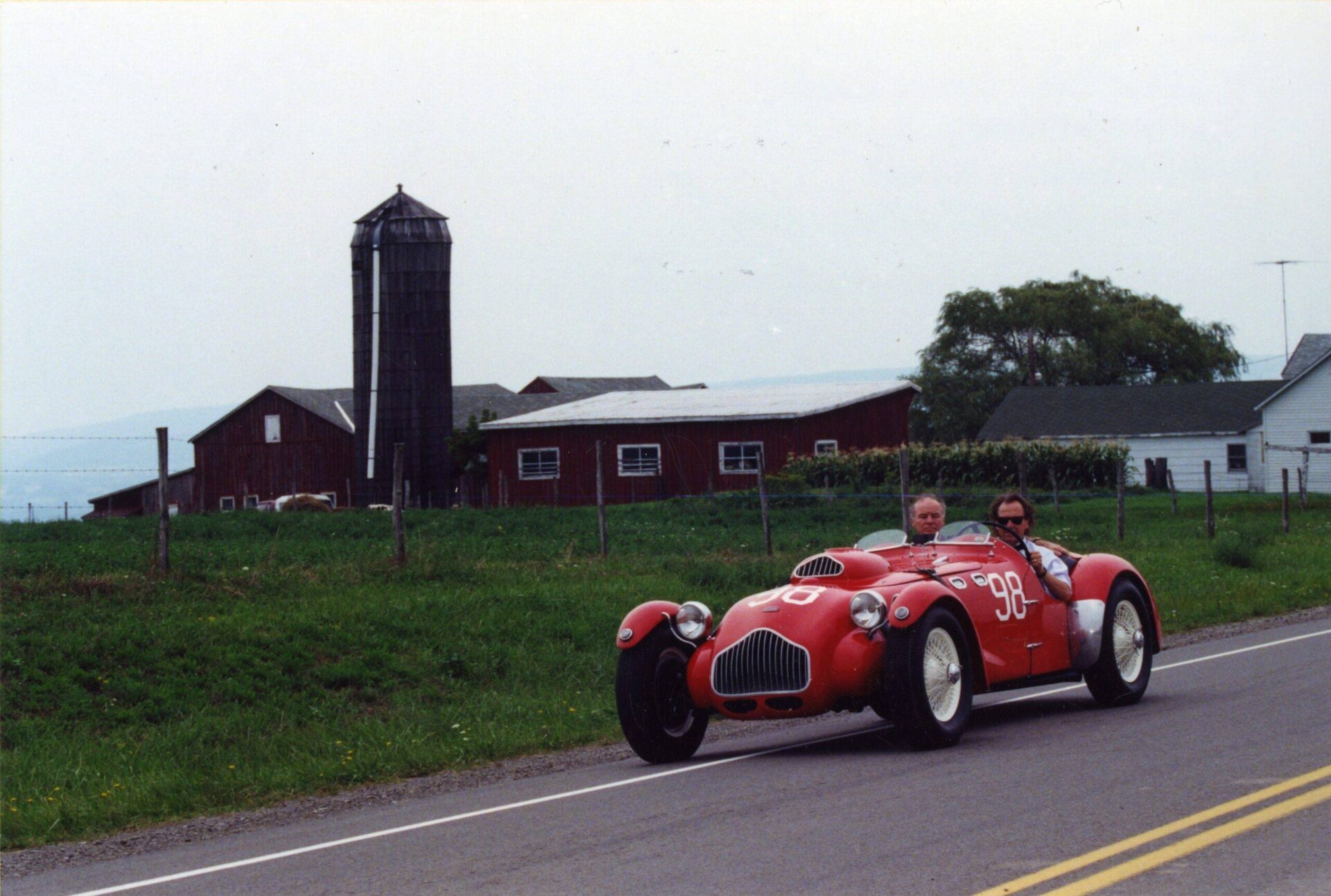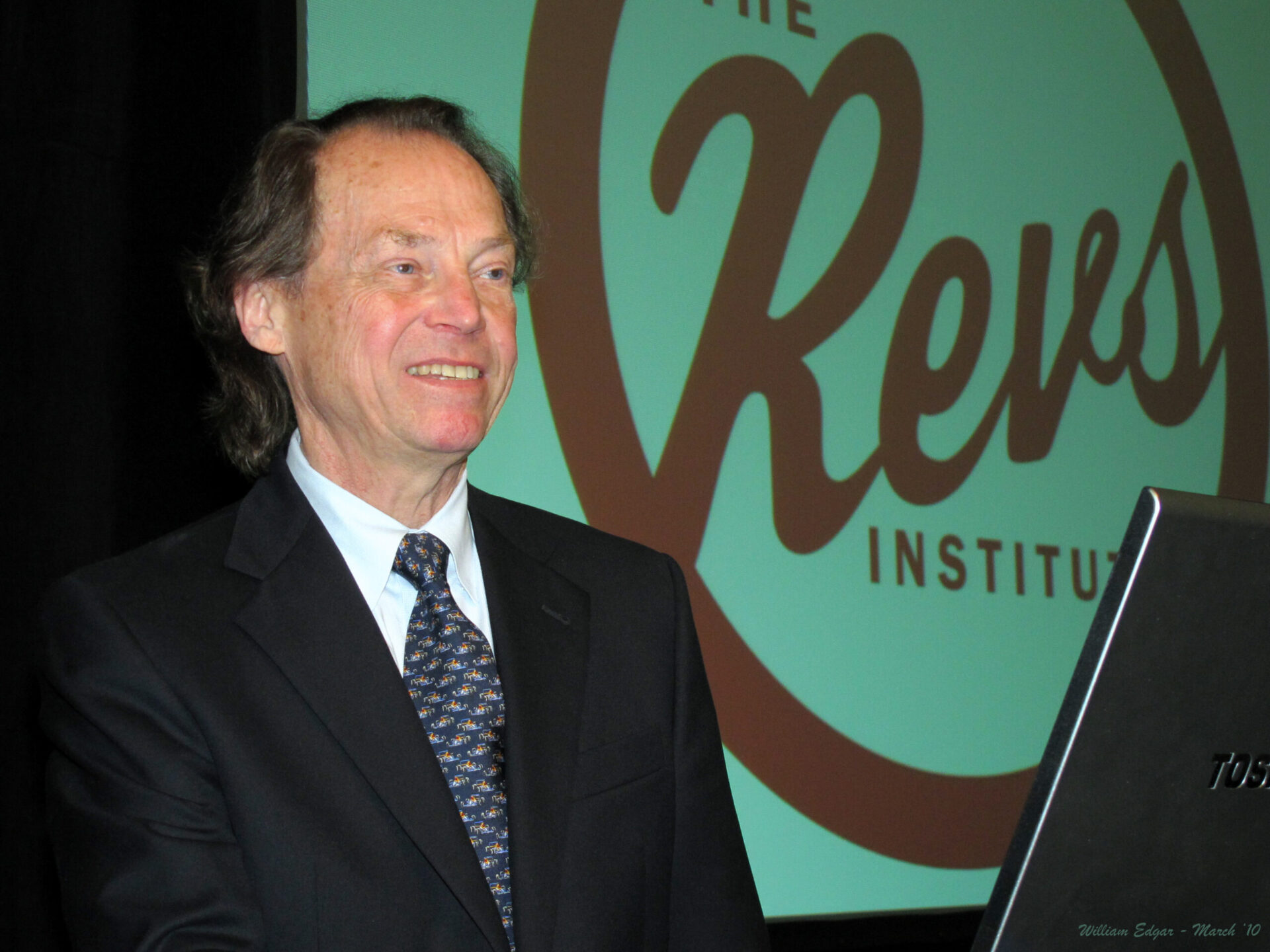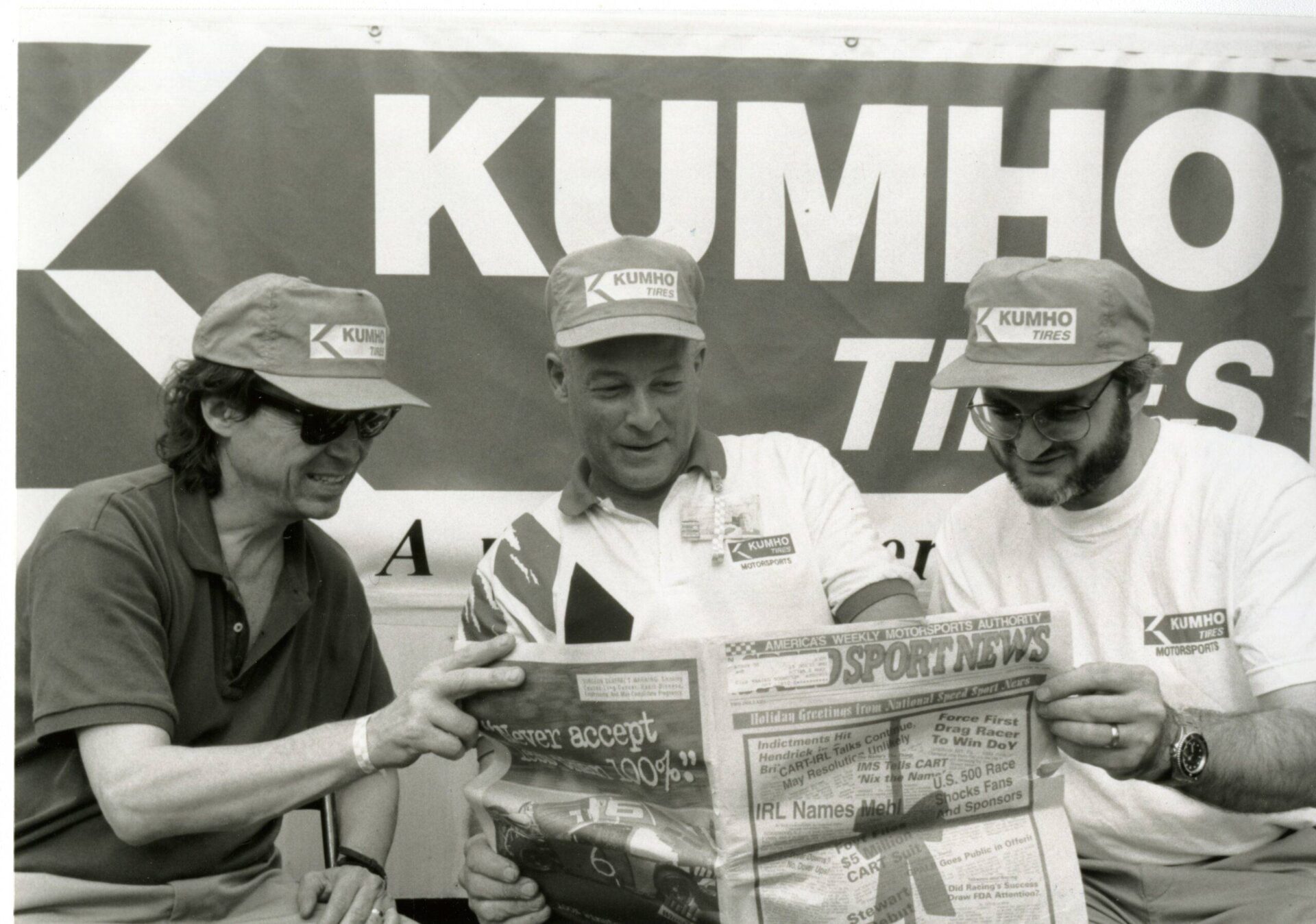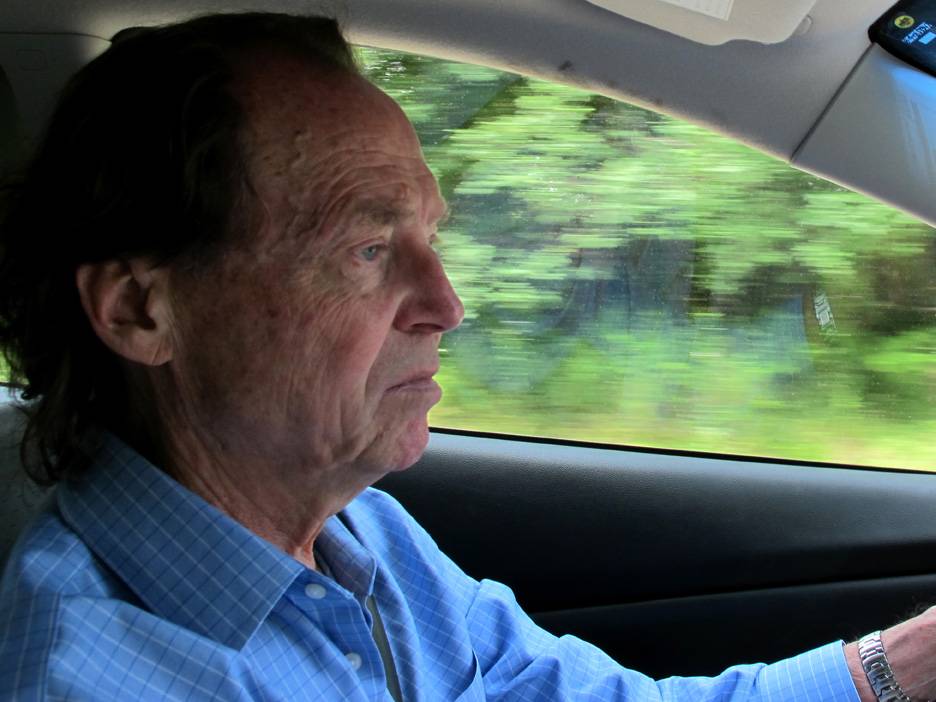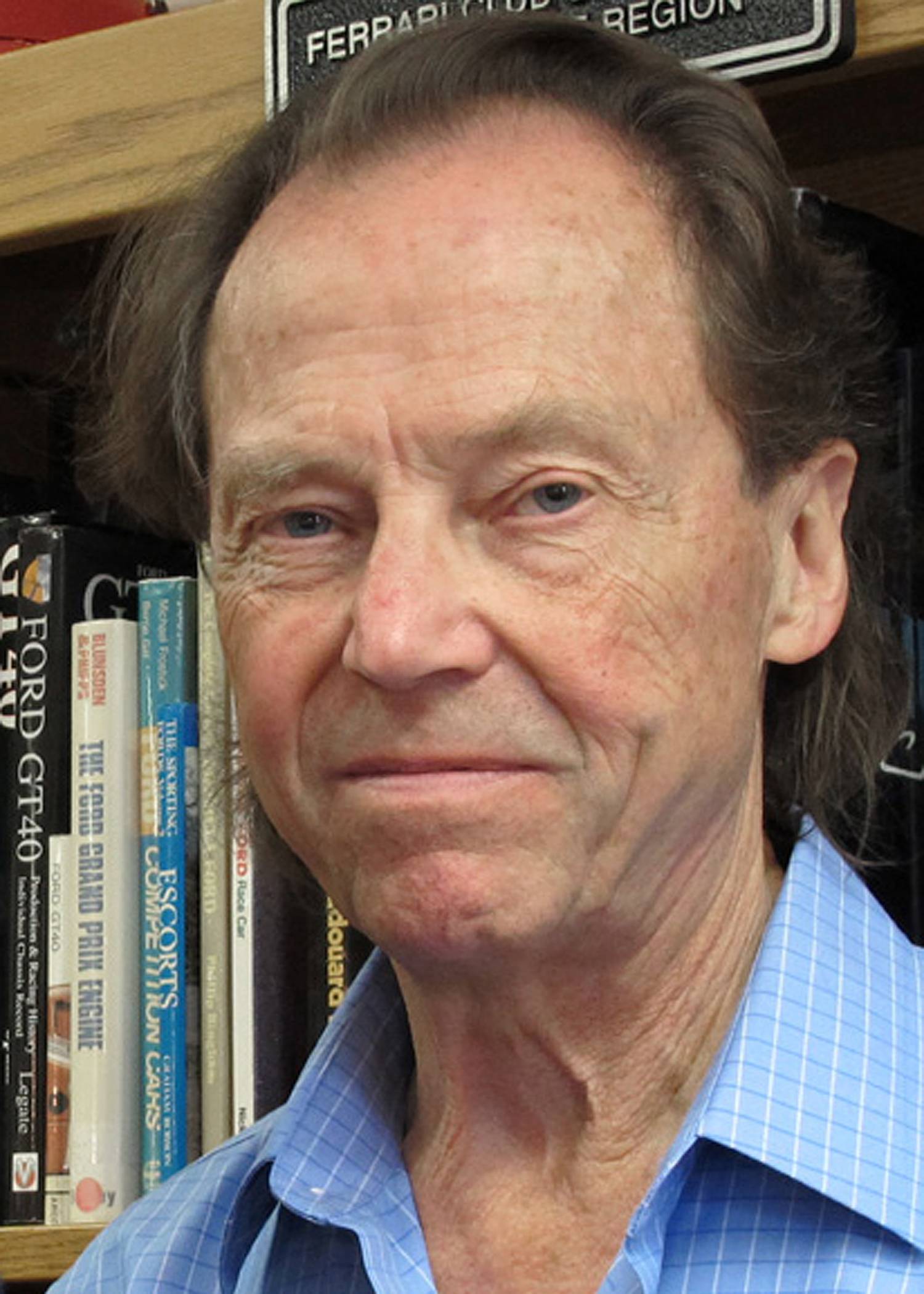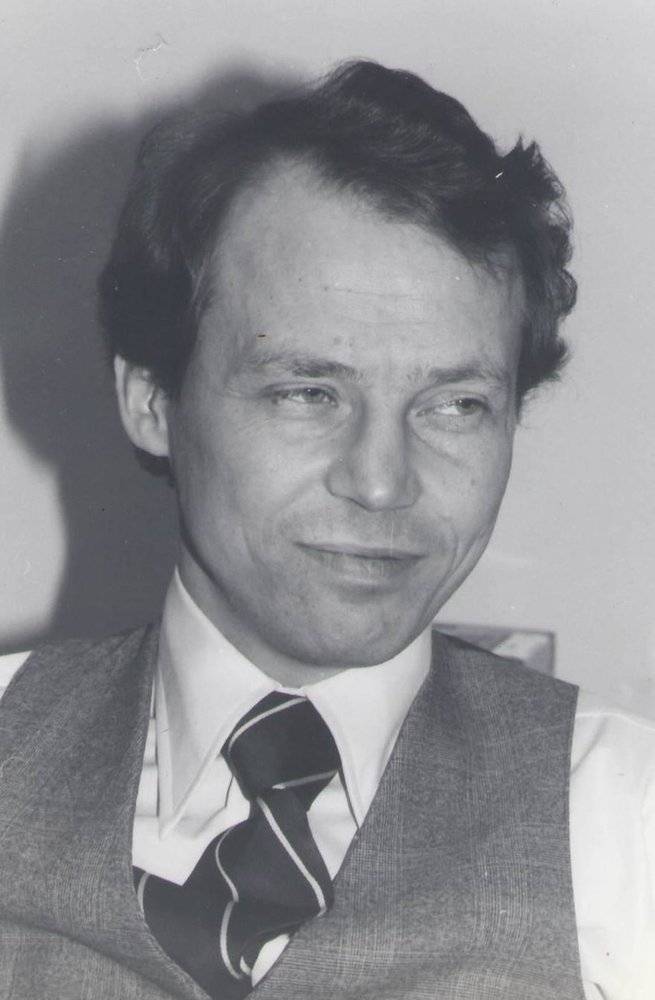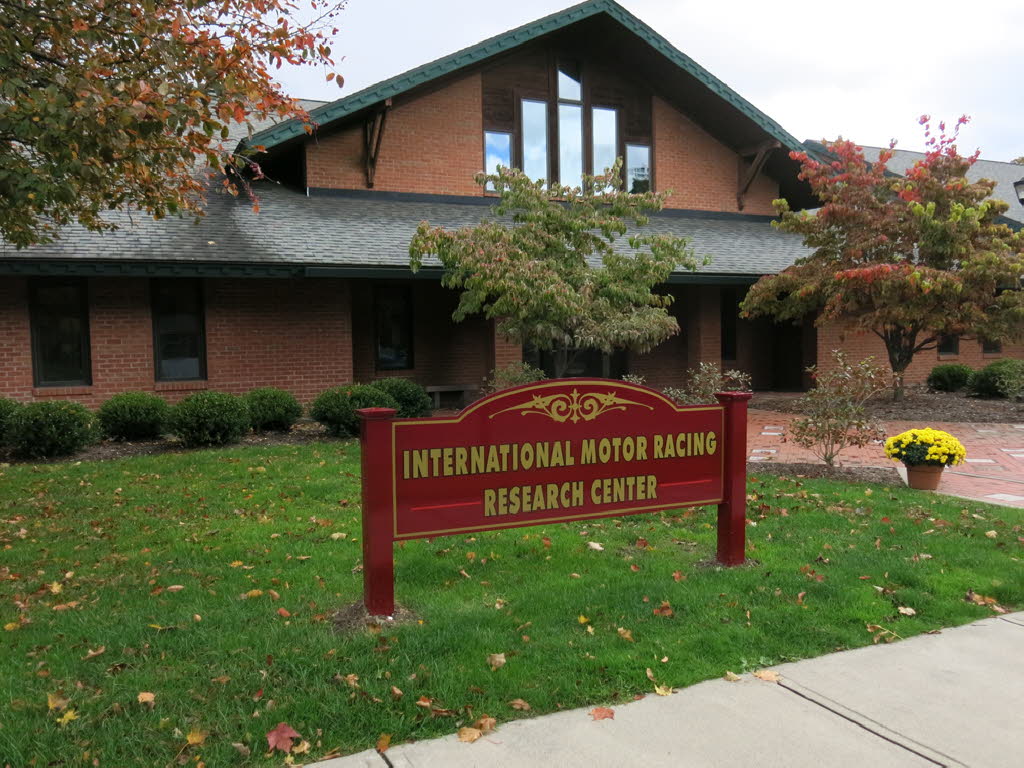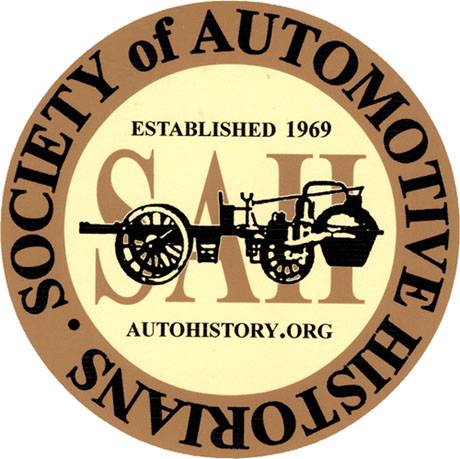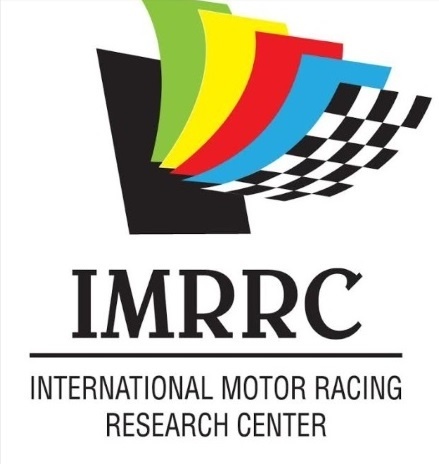Jonathan Summers is a teaching assistant and guest lecturer at Stanford University. He’s an independent automotive historian, podcaster, blogger and Pebble Beach docent. A lifelong car and motorcycle enthusiast. Mr. Summers’ recent work has focused on historiography in motor racing, delving into not just what happened, but how these stories were preserved, by whom and why. From text and still photography through television and now to YouTube, Goodwood and Gran Turismo, his presentation examines the evolution of the methods in which the stories of motor racing have been told and the history preserved.
Bio
Jonathan Summers is a teaching assistant and guest lecturer at Stanford University. He’s an independent automotive historian, podcaster, blogger and Pebble Beach docent. A lifelong car and motorcycle enthusiast.
Notes
Transcript
[00:00:00] Hello and welcome to the Gran Touring Motor Sports Podcast Break Fix, where we’re always fixing the break into something motor sports related. The following episode is brought to you in part by the International Motor Racing Research Center, as well as the Society of Automotive Historians, the Watkins Glen Area Chamber of Commerce and the Arts Singer Family Motor Racing as a mediated experience by Jonathan Summers.
John Summers is a teaching assistant and guest lecturer at Stanford University. He is an independent automotive historian, podcaster, blogger, and Pebble Beach docent, a lifelong car and motorcycle enthusiast. Mr. Summer’s recent work has focused on historiography in motor racing, delving into not just what happened.
How these stories were preserved by whom and why from text and still photography through television, and now to YouTube, Goodwood and Grand Tomo. His presentation examines the evolution of the methods in which the stories of motor racing have been told and the history preserved. All right. [00:01:00] John Summers with motor racing as a mediated experience.
All right. Thank you very much, Bob. Thanks for coming, everybody in for listening to me. My name’s John Summer. I’m a teaching assistant at Stanford University and my presentations about motor racing as a, as a mediated experience. A few years ago at this conference, delegates were amused by the way in which the same image cropped up at the beginning of each presenter, was seeking to go back to the beginning of motor racing.
And to illustrate this, we used an image of lip, now a French newspaper, which organized what’s now considered the first motor race. That each historian should use the same image from the same media outlet illustrates how racing has been a mediated experience from its very inception. Those to say there has always been the race, the driver, the car, and the reporter.
We historians tend to talk about the form three instead. This paper [00:02:00] examines how the stories have been told. It’s worth talking about because of the current revolutionary changes in automotive media. At First, motor racing was mediated by journalism and illustration. The car came of age in an era before radio, tv, the internet and smartphones maturing alongside these transformative technologies.
However, while illustrations or photographs were common to almost every 20th century publication about motor racing, there were perhaps only one or two images to illustrate an entire motor race or a complete in new car. Minor stories typically had no illustration. The fullest impression of the event or vehicle in the story came from the written word.
The denseness of the text is illustrated in these images. So my point here is we’ve magazines from about 75 years of history from two sides of the Atlantic, and you’ve got the same whole bunch of text, few black and white photographs to properly discuss the written sources of motor [00:03:00] racing, newspapers, magazines, and books.
And to survey the thousands of automotive writers and publishers thoroughly would require a paper similar in length to this one that I’m giving today. So today my focus is on the present and the future, but what can be said is that throughout the 20th century, innovations in print and distribution steadily increase the reach and scope of racing themed, written word and still photography media.
While many of the first images of the cars and racing were painted or drawn, the first photograph was taken in 1825, and cameras were available to, well todo 11 year old boys by 1912. Hence this very famous Laue image that he was 12 when he took the picture there, or 11 I think. Until the 1970s, these images were typically grainy and black and white, and I’ve got a contrast there, 20 years apart of motorsport there, the [00:04:00] technologies of photography and the car evolved in tandem, developing slowly in the 19th century before becoming the defining technologies of the 20th.
Cars racing and the people around racing have always been considered glamorous and associated with good living as a zeitgeist. Technological object racing cars are marvelous to photograph and even better to film. Can you see? That’s Phil Hill taking a photograph of the Monaco Grand Prix there as a fan and this photograph book that rode and track put together here were the photographs that he took as a racing fan in the 1950s.
Because fundamentally what we’re talking about here is the human adventure, and I want you to look closely into Bruce Ty’s eye there because I feel like this photograph captures the human adventure almost better than any other single thing I could think of. I did have sections on the Moving Image evolution of cinema, and, and I wrote a really interesting section on the [00:05:00] people that tell us the stories of motor racing, people like Murray Walker and Chris Connor Mackey and Darryl Waltrip.
And those were the three examples that I was gonna use, but I, I don’t have the time to cover those, and I really want to talk about the contemporary and the future. I’m gonna talk about the state of the nation here, and I’m gonna focus on Mark Martin, who’s already got a mention and I know he’s very well loved a around Watkins Glen.
That’s why I picked on him particularly, and, and fundamentally what I’m talking about here is I have a worry that motor racing’s place in posterity. You know, I worry about what’s gonna happen after our generation has gone. Basically, with cars becoming as ubiquitous and function as microwave ovens, I worry that people born today will not see our sport as worthwhile.
I believe the way to show its value is to tie the great engineering and racing stories of the past to living artifacts, the cars that have survived. Thinking about effective methods and platforms of storytelling means that I noticed how automotive and motor racing [00:06:00] storytelling has evolved in an age of YouTube and of streaming media, and we can even see that within.
Our conference, that our conference has evolved in the last couple of years to deliver well on this occasion to to deliver some streaming media. I first want to talk about the continuous feed. One very obvious recent development is the idea of the continuous feed. By this I mean that there are so many cameras in cars at tracks, and covering the race itself that no missed gear shift, fender rub, or expletive over the team.
Radio goes unrecorded. It sits there, ready to be dissected, played a thousand times over in frame by frame, slow motion. This is an almost perfect data set and it must be almost unprecedented in human history and it’s available in perpetuity for future historians. One YouTuber. A Mark Martin fan, traces his drivers many close failures to win the NASCAR Championship in precise, point by point, agonizing detail.
In case that’s not enough information, [00:07:00] mark himself. Tells us the story as he travels the country in his rv, and this is his podcast. I knew nothing about that. He does it season by season. You can see there more. We have the telemetry results from cars where the Ferrari Formula One team to provide access to the data set to a biographer of Fernando Alonso questions about how or why or where he was better than his teammates could be answered in terms of raw cornering speed, breaking point, and shift point data.
Not only would we know how much better Alonzo was, we could probably measure it in terms of seconds per lap. We also have live real-time commentary on social media, the impassioned reactions of a moment. I can’t believe the stop and turned in on Hamilton. Are there in digital immortality on Twitter or Facebook documenting the feelings of spectators and participants during the race, not just afterwards.
This is Nicki, louder at the Berg ring, and I want you to look closely. There is the flute, [00:08:00] plats and the cars like, well, half a foot off the ground there, which is kind of puts a swat on my palms just thinking about it, having. Got some air on a bike there not so long ago. But look, one of the revelations of loud as 1976 Bergen crash was that a piece of film of the incident exists.
It was shot by a spectator on his personal CNY camera in the mid seventies. This kind of unofficial filming was uncommon. Now it’s ubiquitous. And let’s creators diligently upload to social media platforms. Accessing this massive repository is impossible, even when shared searching. This material is much like combing through microfiche of newspapers, which was the principle research tool of my teens and twenties, and it was dull and time consuming.
The massive archive personal smartphone videos are akin to the family photo album of the 20th century. It’s in your mom’s attic. It’s covered in dust. It’s an undiscovered archive. The result of this information overload in Formula One has led to a development which far predates both cars and [00:09:00] any communications technology, and speaks to the way that we humans truly communicate with each other and find meaning in the world around us.
Formula One Drive to survive takes its storylines from Formula One, but packages them in an accessible way for a new audience. This novel form is a story, and indeed the show plays like a soap opera opera, a fable over facts with stylized villains and heroes. We may feel this is Banard, but it’s proved a huge hit and has increased.
The viewership of Formula One. Events that were previously impossible to cover properly can now be covered. The Isle Man TT with its 37 mile lap or lamont taking place in rain and at night were difficult indeed, impossible to cover properly in the 20th century. Now it can be done. One-off events like the Indie 500 have a fresh appeal due to the limited time commitment favored by our ever busier society.
This is in contrast, NASCAR or Formula One. With their nine month plus seasons [00:10:00] demanding a high level of commitment to sitting on the couch and watching tv. YouTube is a truly revolutionary technology in the study of motor racing history. This is because it’s become probably the largest repository of racing content in the world where anyone can watch the life feed of races and judge for themselves how good each driver was.
Understanding fan geo’s career is about assessing secondary sources and race results. Assessing Center’s career can be done by watching each of his Grand Prix drives. It cannot be understated. How compelling the shift from secondary to primary source is. For a historian, this can be expressed a different way, apart from a few of his cars and his mechanic’s advice in the on the back pages of magazines.
Almost all of the genius that was Smokey Eunuch is gone today. Formula One, aerodynamicists build their resumes with the insights they deliver in [00:11:00] YouTube videos. During the pandemic, YouTube was solidified as the place to learn to fix your car searches like break job on 2012 Camry or radiator Change on E 46 BMW yield meaningful results.
Why pour over a manual when five minutes watching a video shows you exactly what needs to be done? This tutoring is free, make and model specific. Can be paused and rewatched infinite times, and even allows questions to be asked in the comments section. It’s hard to grasp the scope of the revolution in information narrative and teaching that this represents.
For the last 10 years, I’ve co tutored a class called Tales to Design Cars. By, in this time, my material, the students and the automotive world have each evolved considerably. At first, I used to use a clip of the Seminole Steve McQueen movie Lamore to frame my approach and [00:12:00] introduce myself. And the movie still forms part of the class today.
Back in 2013, McQueen’s movie making and with the Porsche, Ferrari and their five liter V12 engines as central characters remained unusual and distinctive in 20 21, 1 student commented that if he wanted an immersive oral experience, I just watch a 7 87 on board referring to the Master 7 87 Rotary of which there are many films on YouTube and considered by many under the age of 30 to be, quote, the best sounding car.
Close quotes in the life of my class, the Queen’s work has been eclipsed by the breadth and depth of YouTube more. YouTube has allowed scope to do more with a given story to weave race footage and contemporary content into pithy narratives. Explaining nuanced events and races. Illustrations of this are super 100 mile an as bathhurst histories [00:13:00] focusing on a particular driver or car, an Aiden Millwoods Formula One site.
This is also created absurdities, such as Hot Wheels racing as a spectator sport. So that is a one 64th scale die cast in the bottom right. In a way, these people are eating our lunch, as I discussed in my NASCAR Pixar presentation at this conference a few years ago. Truthfully, however, I have to say I think it’s fabulous that so many people are doing Motorsport history, talking and thinking about cars racing and how to document it.
Over the past decade, especially through the pandemic, a distinctive culture of car YouTubers has developed this culture evolved as YouTube began to pay creators meaningful incomes. This is Hoy Tyler Hoover, a Kansas based 30 something, and a talented pitchman with an UN-American willingness to love himself and a deep, passionate love of modern semi collectible cars in need of work.
Sprouting from his success [00:14:00] are a number of other Wichita based automotive YouTubers, Hoy’s mechanic, the Car Wizard, and various other shameless wannabes who launched their channels by buying one of Hoy’s Unrepairable hoop ties. This Phenomena’s not unique. There’s another group based in Utah, absurdly One YouTuber.
The life of Palos, P A L O S, if you’re interested, provides daily updates on the doings of these various automotive YouTubers. Many of these YouTubers became popular during the pandemic, specifically when they bought a Lamborghini. Hoy currently has three financed by the channel, and he’s a judge at the Amelia Island, Concord De La Goz.
For many years, YouTube Strat line was broadcast yourself, and this is what Hove Stratman, Teva, and others like them have accomplished. What happens in front of the camera is different from real life. When we’re watched, we act differently. Yet authenticity is critical with the YouTube [00:15:00] audience. Hoy’s filmmaking.
His hammy, his jokes are scripted and unfunny, but the man, his passion and his car adventures feel authentic and that’s what keeps viewers coming back. In many ways, this is just the same as Car Guys will tell you at shows from Good Guys to Pebble Beach, you come for the cars, but you stay for the people.
I’ve talked essentially about YouTube because this is the archive in which I’m immersed. It’s important to highlight other forms of emerging motor racing narrative, such as podcasts and audiobooks. This long form non-visual content opens up a broader audience for in-depth content. In many ways, this is the ultimate environment for bench racing.
Certainly, Dale an Jr, never seen more in his element than on his podcast chatting with NASCAR figures of his, his father’s, and his grandfather’s generation. Long, complicated stories, which perhaps could not be told decades [00:16:00] ago can now be revealed. The classical art of rhetoric, the spoken word standing alone, is valid.
Once again. The challenge with audio sources is the concentration required to process the dense volume of information. In other words, it’s easy to become lost and, and hence bored. This Mario Rossi, I thoroughly recommend this podcast if, if you have any interest in the history of nascar, this is.
Absolutely ripping awesome story of a disappeared engine builder. The whole Miami vice scene of Southern Florida in the early 1980s, a absolutely awesome, awesome story. The rise and rise of the Goodwood Festival shows the enormous mass market appeal motorsports heritage can have. This will surely grow when most cars are silent and o alert.
The horsey people with their racing and dressage and specialist haulers and even their special laws. Did you know that in Kentucky you can drive an 18 [00:17:00] wheeler on your car license? True story. You can drive an 18 wheeler on your car license, but only if it’s towing horses. Only if it’s towing horses. So in other words, the horsey people, they need to be a prototype for us.
As James talked about. While the Pebble Beach and Amelia Island events have boomed, many car museums are being dissolved and the struggle to remain solvent and relevant cars and coffee style events where you arrive when you want leave, when you want, have become prevalent. That’s how we do the car hobby at the moment.
I wonder if that’s not gonna have an effect on what’s collected and what’s valued. Since traditionally racing cars were considered the most valuable collectible cars, but you can’t very well drive a can-am car or a shadow Formula One car. To the local cars in coffee, and one wonders how long those cars are gonna retain that level of collectibility.
Given that driving video games represent a completely different way to experience motorsport each year. A friend and I have a [00:18:00] fantasy beard at the Pebble Beach Auctions. I’m not a gamer. He is. He was bemoaning the color of a rough ctr. It was powder blue. You may have seen it. Gooding had it. I expressed surprise that he should be interested in a hot rod Porsche that was considered vulgar by contemporaries and is collectible now simply due to the tiny numbers produced.
He responded, but don’t you remember, dude, GranTurismo, they didn’t license Porsches but roof. They were licensed. That’s why everyone wants roofs now, and if you google up some prices for them, if you owned a roof 10 years ago, my word, you’ve seen some price inflation. Recently and again today, the creator of Grand Tourismo Judges at Pebble Beach and the collectibility of modern classics is driven by gaming culture from 20 years ago.
So to sum up and try and tie together what I’m saying here a little bit, old cars and [00:19:00] bikes make a noise and a smell in the way that electric ones soon won’t. Racing cars and bikes are exciting as kinetic sculpture. While the stories of racing are eye-popping, in an age where personal safety and responsibility trump audacity and adventure, this renders our history of interest to future generations.
Today, anyone can do history. The archive method is in your pocket, or right now in my hand. However, the skill and diligence of a trained and experienced historian is not so readily available. This means the curation and evaluation skills are more important than ever. The opportunity for historians is greater than ever now, and in future we can document in ways undreamed of by future generations.
The mechanism to do that is by telling a good story. Just want to conclude now by offering a word on Fred Sim, who he lost just earlier this year. When I first heard the news, my [00:20:00] thought was now he’s gone. Who will step into the breach and just those of you who don’t know who he is, probably the finest collection of unre restored racing cars in the world, if not the finest he and Miles Collier between the two of them, without doubt, the finest.
So this is somebody who’s very much I would regard as a patron saint of the conference almost. And my thought was, when, since Fred’s gone, who’s gonna step into the brief? Who’s gonna take his place? He thought so carefully and deeply about racing cars. AMAs such a significant connection influenced the thinking of the whole movement with his passion for unrestored racing cars, this person can’t be replaced.
But upon further reflection, I’ve come to the conclusion that while I’m not Fred and I never will be him, except for folk like us in this room, there’s nobody else. So I’m gonna do my best to continue Fred’s work and carry on telling stories about racing cars and racing drivers. Thank you all for listening.[00:21:00]
This episode is brought to you in part by the International Motor Racing Research Center. Its charter is to collect, share, and preserve the history of motor sports spanning continents, eras, and race series. The Center’s collection embodies the speed, drama, and comradery of amateur and professional motor racing throughout the world.
The Center welcome series researchers and casual fans alike to share stories of race, drivers race series, and race cars captured on their shelves and walls, and brought to life through a regular calendar of public lectures and special events. To learn more about the center, visit www.racing archives.org.
This episode is also brought to you by the Society of Automotive Historians. They encourage research into any aspect of automotive history. The s a h actively supports the compilation and preservation of papers. Organizational records, print ephemera and images to safeguard, as well as to broaden and deepen the understanding of motorized wheeled land [00:22:00] transportation through the modern age and into the future.
For more information about the s a h, visit www.auto.org.
If you like what you’ve heard and want to learn more about gtm, be sure to check us out on www.gt motorsports.org. You can also find us on Instagram at Grand Tour Motorsports. Also, if you want to get involved or have suggestions for future shows, you can call our text at (202) 630-1770 or send us an email at crew chief gt motorsports.org.
We’d love to hear from you. Hey everybody, crew Chief Eric here. We really hope you enjoyed this episode of Break Fix, and we wanted to remind you that GTM remains a no annual fees organization, and our goal is to continue to bring you quality episodes like this one at no charge. As a loyal listener, please consider subscribing to our Patreon for bonus and behind the scenes content, extra [00:23:00] goodies and GTM swag.
For as little as $2 and 50 cents a month, you can keep our developers, writers, editors, casters, and other volunteers fed on their strict diet of Fig Newton’s, gummy bears, and monster. Consider signing up for Patreon today at www.patreon.com/gt motorsports. And remember, without fans, supporters, and members like you, none of this would be possible.
Livestream
Learn More
Consider becoming a GTM Patreon Supporter and get behind the scenes content and schwag!
Do you like what you've seen, heard and read? - Don't forget, GTM is fueled by volunteers and remains a no-annual-fee organization, but we still need help to pay to keep the lights on... For as little as $2.50/month you can help us keep the momentum going so we can continue to record, write, edit and broadcast your favorite content. Support GTM today! or make a One Time Donation.
This episode is sponsored in part by: The International Motor Racing Research Center (IMRRC), The Society of Automotive Historians (SAH), The Watkins Glen Area Chamber of Commerce, and the Argetsinger Family – and was recorded in front of a live studio audience.
Other episodes you might enjoy
Sixth Annual Michael R. Argetsinger Symposium on International Motor Racing History

After a hiatus of two years due to the pandemic, the International Motor Racing Research Center (IMRRC), partnering with the Society of Automotive Historians (SAH), presents the Sixth Michael R. Argetsinger Symposium on International Motor Racing History. The Symposium established itself as a unique and respected scholarly forum and has gained a growing audience of students and enthusiasts. It provides an opportunity for scholars, researchers and writers to present their work related to the history of automotive competition and the cultural impact of motor racing. Papers are presented by faculty members, graduate students and independent researchers.
The history of international automotive competition falls within several realms, all of which are welcomed as topics for presentations, including, but not limited to: sports history, cultural studies, public history, political history, the history of technology, sports geography and gender studies, as well as archival studies.
The symposium is named in honor of Michael R. Argetsinger (1944-2015), an award-winning motorsports author and longtime member of the Center’s Governing Council. Michael’s work on motorsports includes:
- Walt Hansgen: His Life and the History of Post-war American Road Racing (2006)
- Mark Donohue: Technical Excellence at Speed (2009)
- Formula One at Watkins Glen: 20 Years of the United States Grand Prix, 1961-1980 (2011)
- An American Racer: Bobby Marshman and the Indianapolis 500 (2019)


